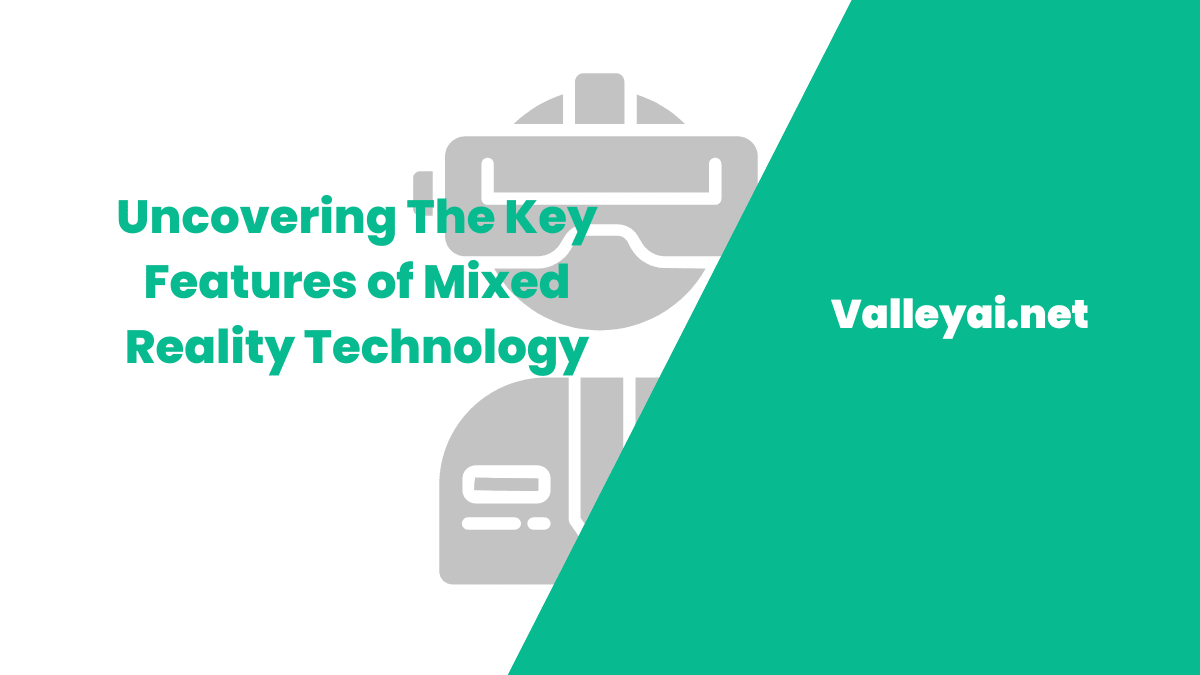Let’s uncover the key features of mixed reality technology and its applications. Mixed reality (MR) combines elements of virtual reality (VR) and augmented reality (AR) to create experiences that go beyond traditional screen interactions. Imagine a man wearing a headset that shows a missing limb as he remembers it—this is an innovative example of how MR liberates people from screen-bound experiences.
By enabling instinctual interactions with data and holographic representations, it provides users a fascinating fusion of the real and digital worlds. As an emerging technology, MR offers stunning visuals and remarkable precision in anchoring virtual objects in real space, making it a powerful tool across businesses, social media, and personal user experiences.
Mixed reality is also accessible on popular handheld devices and through mobile solutions like social media filters on Instagram. This wave of technology is the next step following PCs and smartphones, bringing computing to hundreds of millions of online explorers around the world. With high fidelity 3D models and an impressive arsenal of features, MR technology allows users to interact within the real and physical world with stunning immersion and precision.
History Of Mixed Reality
In 1994, the idea of mixed reality was first introduced through a pivotal paper by Paul Milgram and Fumio Kishino. They presented a taxonomy of visual displays that highlighted a virtuality continuum—a range spanning fully real to entirely virtual environments.
This concept not only provided a structured view of blending realities but also paved the way for applications of mixed reality to go beyond displays. Their work laid a foundation for how digital and physical spaces could interact, shaping the future of immersive technology across various fields.
What is Mixed Reality?
Mixed Reality is a fascinating spectrum of technology that encompasses both Augmented Reality (AR) and Virtual Reality (VR), blending the digital and physical worlds in a unique way.
Unlike traditional AR, which only overlays digital content onto the real world, Mixed Reality goes a step further by allowing virtual objects to interact and inhabit the physical environment.
This interaction creates a sense of realism and presence that allows users to perceive virtual objects as tangible elements in their environment. By anchoring these digital elements convincingly, users can feel they are part of a hybrid environment where real-world and digital elements coexist and interact in real time.
Mixed Reality also offers an immersive experience that is used across various sectors. In the healthcare industry, MR is enhancing medical training and assisting in advanced surgical procedures. In education, it supports immersive learning experiences, while in the manufacturing sector, it aids design, simulation, and troubleshooting. MR even enriches user engagement in the entertainment industry and creates unique shopping experiences in retail.
By integrating 3D, natural, and intuitive interactions between human, computer, and environmental elements, Mixed Reality is unlocking a new reality powered by advancements in computer vision, graphical processing, display technologies, input systems, and cloud computing
Key features of mixed reality technology
Although mixed reality works to connect the dots between the virtual and real worlds, here are some key features of mixed reality.
Real-Time Interactivity
One of the key features of mixed reality technology is its ability to provide real-time interactivity. This means that the user can interact with the digital content in the same way they would with the physical world. For example, in a mixed-reality game, the user can pick up virtual objects, move them around, and even throw them. This level of interactivity makes the experience more immersive and engaging.
Spatial Awareness
Another key feature of mixed reality technology is its ability to provide spatial awareness. This means that the digital content is aware of its surroundings and can interact with the physical world. For example, in a mixed-reality game, the virtual characters can walk around the room and avoid obstacles. This level of spatial awareness makes the experience more realistic and believable.
Multiple Input Methods
Mixed reality technology also allows for multiple input methods, such as hand gestures, voice commands, and head movements. This allows for a more natural and intuitive way of interacting with digital content. For example, in a mixed-reality game, the user can use hand gestures to control the character, making the experience more immersive.
Augmented navigation
There are several ways that apps can use AR to create navigational cues when a user is trying to find a certain location.
Natural language processing (NLP)
From voice commands to visual cues, there are increasingly more ways for software to respond to end users. Mixed reality will only make this more natural.
Customizable design
Users are increasingly demanding more control over the design of the interfaces they use. Mixed reality will allow users to customize their experience even further by allowing them to move elements around.
Potential applications of mixed reality
Mixed reality technology has a wide range of potential applications, including:
- Gaming: Mixed reality games can provide a more immersive and interactive experience.
- Training: Mixed reality technology can be used to provide realistic simulations for training in various industries, such as healthcare, aviation, and the military.
- Retail: Mixed reality technology can be used to provide virtual try-on reality experiences for customers.
- Architecture and Design: Mixed reality technology can be used to create virtual models of buildings and designs, allowing for more efficient and accurate planning.
- Education: Mixed reality technology can be used to create interactive educational experiences for students. Mixed reality can transform education by revolutionizing how students learn about complex concepts like robotics. By combining mixed reality with a deep understanding of the differences between computers and robots, students can grasp the intricate details of these cutting-edge technologies. To explore this topic further, you can read more about the difference between computers and robots here.
Advantages of mixed reality
Transparency: This is another trend that’s already widespread in at least some aspects of mixed reality. Transparent visuals or graphics can be used for a variety of purposes like navigational cues, checklists, and more.
Gamification: One growing trend in gaming is the use of more complex and complex algorithms to create “augmented” games. This includes the addition of interactive elements like navigation cues or crowdsourced data to create more advanced games.
Increased Use of Augmented Reality: Several studies have shown that the use of AR has increased significantly over the past few years, and many believe that the growth rate will only continue to increase over the next few years.
Conclusion
Mixed reality is a relatively new concept In artificial intelligence that’s still in the early stages of development. At the moment, it’s mainly being used for fun and experimental apps that mostly showcase the potential of the technology.
This technology has the potential to revolutionize many industries, such as gaming, training, retail, architecture, and education. As mixed reality technology continues to evolve, we can expect to see even more innovative and exciting applications in the future.
FAQs: Understanding Mixed Reality Technology and Its Key Features
What is a key feature of mixed reality?
A key feature of Mixed Reality is its ability to seamlessly blend virtual and physical elements, creating a combined reality that feels both immersive and interactive. It lets users visualize and manipulate digital information within a physical context, enhancing the experience.
What are the different types of mixed reality?
The different types of MR are: Augmented Reality (AR), Augmented Virtuality (AV), Extended Reality (XR), Virtual Reality (VR), and Hybrid Reality. Each type of MR offers unique advantages for various purposes such as entertainment, education, and training.
What are the elements of mixed reality?
Mixed Reality technology combines the element of Virtual Reality (VR) and Augmented Reality (AR), allowing users to interact with digital objects integrated into the real world through devices like Microsoft HoloLens.
What are some examples of mixed reality use cases?
Gaming and entertainment.
Education and training.
Healthcare.
Retail and e-commerce
Manufacturing and industrial design.
What is an example of mixed reality?
An example in a Mixed Reality experience, imagine a digital object like a book placed on your bedside table in the real world. You can pick it up with your real hand, put on your headset, and turn the pages with your real fingers as you read naturally.
How does mixed reality differ from virtual reality and augmented reality?
Mixed Reality blends physical and digital elements in real-time, encompassing VR and AR. VR is fully immersive in a computer-generated digital environment, AR enhances the real world with digital information.
Admin
My name is Kaleem and i am a computer science graduate with 5+ years of experience in AI tools, tech, and web innovation. I founded ValleyAI.net to simplify AI, internet, and computer topics while curating high-quality tools from leading innovators. My clear, hands-on content is trusted by 5K+ monthly readers worldwide.

